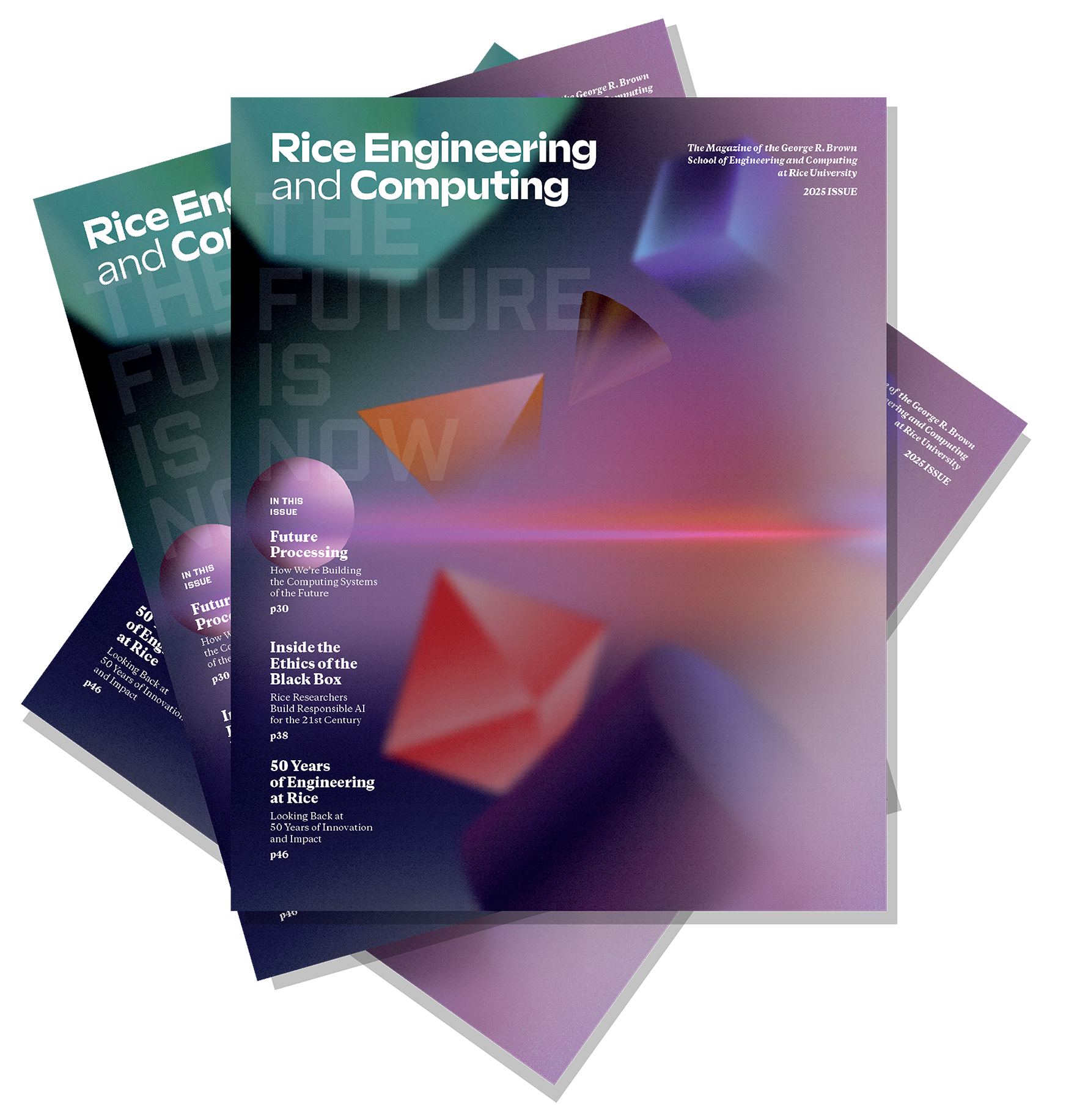
The 2025 issue of Rice Engineering and Computing Magazine is here!
In our 50th anniversary issue, we celebrate the deep and growing connection between engineering and computing. From our early breakthroughs in high-performance computing to today’s advances in AI and data science, Rice has long been at the forefront of computing innovation. This edition highlights some of the people, ideas, and investments shaping what’s next.
Huff Engineering Design Showcase Honors Student Ingenuity and Impact
Thrust But Verify wins top prize for satellite propulsion system

From satellites and spinal surgery to infant health and haptic virtual reality applications, student engineering teams at Rice University demonstrated how hands-on design can drive real-world impact at the 2025 Huff Oshman Engineering Design Kitchen (OEDK) Showcase and competition held in April at the Ion.
This year’s top prize ⎯ the Woods-Leazar Innovation Award for Excellence in Engineering and a $5,000 cash award ⎯ went to Thrust But Verify, a team charged with developing a satellite propulsion module for Stellar Exploration, a California-based aerospace company.
“I think the whole team is just exhilarated,” senior Warren Rose said of his fellow team members ⎯ seniors Stefan Budimlic, Anish Chitnis, Mark Lopatofsky, Jack Maurry, Sam Sarver, Daniel Stulski, and Liam Waite. “We put in so much work on this. It’s a project that everyone here has passion for. We now have a product to show we’ve made real progress.”
Eighteen other prizes were given, including the Willy Revolution Award for Outstanding Innovation. In this category, Cushion Queens took home first place for its textile-based seat cushion for public transit operators, which uses fluid logic to deliver mechanotherapy to mitigate the negative health impact of prolonged sitting.
Sponsored this year by Chevron, Shell and the Rice Engineering Alumni Association, the annual showcase is a rite of passage for engineering design students who spend countless hours at the OEDK, a 20,000-square-foot facility equipped with design tools, prototyping equipment, meeting rooms and designated work benches.
